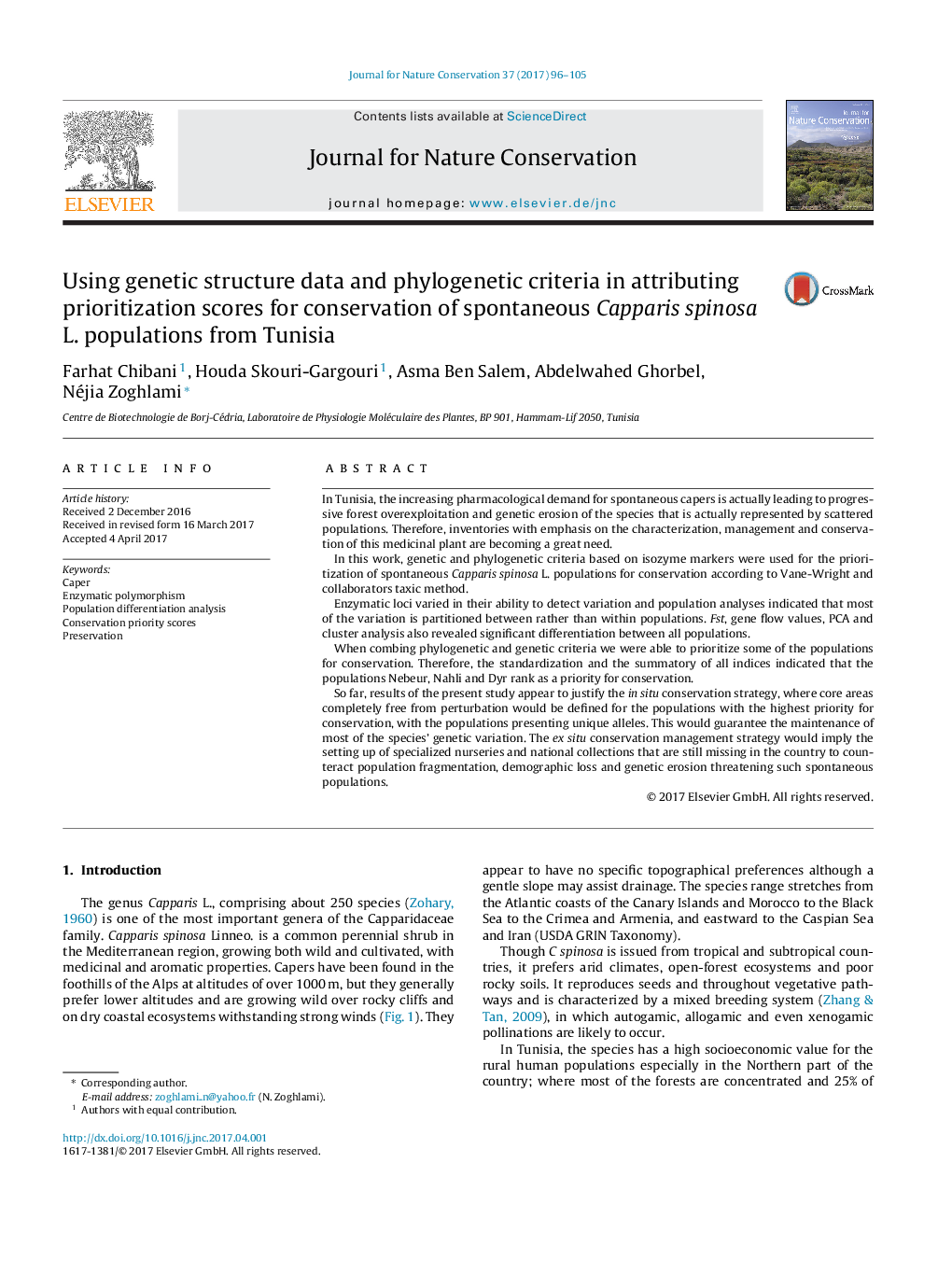| کد مقاله | کد نشریه | سال انتشار | مقاله انگلیسی | نسخه تمام متن |
|---|---|---|---|---|
| 5744835 | 1618531 | 2017 | 10 صفحه PDF | دانلود رایگان |

In Tunisia, the increasing pharmacological demand for spontaneous capers is actually leading to progressive forest overexploitation and genetic erosion of the species that is actually represented by scattered populations. Therefore, inventories with emphasis on the characterization, management and conservation of this medicinal plant are becoming a great need.In this work, genetic and phylogenetic criteria based on isozyme markers were used for the prioritization of spontaneous Capparis spinosa L. populations for conservation according to Vane-Wright and collaborators taxic method.Enzymatic loci varied in their ability to detect variation and population analyses indicated that most of the variation is partitioned between rather than within populations. Fst, gene flow values, PCA and cluster analysis also revealed significant differentiation between all populations.When combing phylogenetic and genetic criteria we were able to prioritize some of the populations for conservation. Therefore, the standardization and the summatory of all indices indicated that the populations Nebeur, Nahli and Dyr rank as a priority for conservation.So far, results of the present study appear to justify the in situ conservation strategy, where core areas completely free from perturbation would be defined for the populations with the highest priority for conservation, with the populations presenting unique alleles. This would guarantee the maintenance of most of the species' genetic variation. The ex situ conservation management strategy would imply the setting up of specialized nurseries and national collections that are still missing in the country to counteract population fragmentation, demographic loss and genetic erosion threatening such spontaneous populations.
Journal: Journal for Nature Conservation - Volume 37, June 2017, Pages 96-105